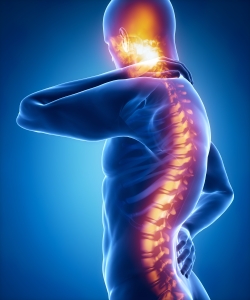According to Cedars-Sinai Medical Center researchers, brain cell activity and the spinal cord are essential for controlling the body’s response to central nervous system (CNS) illnesses including Alzheimer’s, Huntington’s disease, and spinal cord injuries.
The study concentrated on cellular alterations in astrocytes, a kind of brain and spinal cord support cell. These cellular alterations, generally termed as “reactivity,” play a key role in determining the outcomes of central nervous system illnesses. This is the first time a group of scientists has produced evidence that astrocytes influence disorder-specific alterations in their molecular profiles using specialised collections of molecules called transcriptional regulators.
The study, which was published in the peer-reviewed magazine Nature, might pave the way for the creation of a wide range of novel medicines that target particular astrocyte activity in order to treat a number of central nervous system diseases including multiple sclerosis and stroke.
“There is a growing interest in targeting astrocyte reactivity as treatment strategies for central nervous system disorders,” said Joshua Burda, PhD, lead and co-corresponding author of the study, and assistant professor in the Department of Biomedical Sciences and the Department of Neurology. “Understanding how different kinds of astrocyte responses are coordinated and the consequences of manipulating those responses not only will help us better understand diseases of the central nervous system but can provide crucial insights that enable the development of better therapies for these conditions.”
Also Read: Sense of smell is our most rapid warning system
Almost all nervous system injuries and disorders are characterised by astrocyte reactivity. Yet, little is known about what astrocyte reactivity is, what causes it, how it varies amongst illnesses, and how these variances are controlled. The word “reactivity” refers to a wide range of astrocyte cellular alterations that all entail gene expression variations.
Burda and his team used a bioinformatics tool to identify “astrocyte reactivity transcriptional regulators” — specialised molecules that control gene expression — in various neurological injuries or diseases in order to learn more about the mechanisms controlling these astrocyte gene expression changes.
The method relies on the consensus of multiple types of data, including computational and biological experimental data, which all have to align to positively identify these specialized molecules.
Next, the investigators used genetic analyses to validate reactivity transcriptional regulators as the major determinant of central nervous system disorder progression and outcomes.
Together, the results of these studies demonstrated that control of reactivity gene expression changes is highly complex. The team of scientists also showed for the first time how a relatively restricted pool of transcriptional regulators can interact to coordinate the altered expression of hundreds or even thousands of reactivity genes in astrocytes.
“With this broad dataset, we can now begin to probe and link these modular astrocyte gene regulatory pathways to specific aspects and states of reactivity associated with numerous common neurological disorders,” Burda said. “Ultimately, we would like to use this information to therapeutically enhance adaptive responses, while diminishing maladaptive aspects of astrocyte reactivity. I am also hopeful that our findings will spark an important shift in how people think about and study astrocyte reactivity.”
Michael Sofroniew, MD, PhD, a distinguished professor at UCLA’s Department of Neurobiology, is the study’s other co-corresponding author. Burda Lab team members Keshav Suresh, a PhD candidate in the Cedars-Sinai Biomedical Sciences Program, and Sarah McCallum, PhD, a postdoctoral scholar, are among the other Cedars-Sinai authors.
Follow Medically Speaking on Instagram





